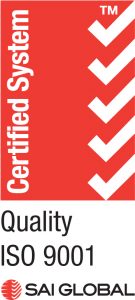Follow Us
© Copyright Forest Air Helicopters (Aust) Pty Ltd 2019.
Site designed by Ian Cossor Design and developed by COXTECH.


You can start training at any age and fly with an instructor. Practically speaking there are some practicalities that come into it, the ability to reach the controls for example.
There are minimum ages which relate to solo flight and licensing.
To fly solo you have to be at least 15. To sit the flight test for a Recreational Pilots License RPL(H) you must be 16. Private Pilot’s Licence PPL(H) you must be 17 and for a Commercial Pilot’s Licence CPL(H) you will need to be 18.
So you could complete all your training and on your 18th birthday under take the flight test and be awarded your CPL.
There are some medical requirements that need to be met in order to gain a pilot’s licence. A private pilot will need a Class 2 medical and a commercial pilot will need a Class 1.
While it is true that as you age the medical assessment process for these certificates becomes more rigorous. If you can pass the medical requirements then you can get a license!
In the early stages lessons typically consist of an hours flying time with half an hour either side for pre-flight briefing and debriefing. As training progresses the length of the lessons increases and sometimes so does the complexity of the briefings.
No. All class room time associated with the flight training is covered by the cost of the flying. There is also scope for classroom time spent with students that are self-studying for their exams. This, again is done at no cost to the student.
The majority of the cost of getting a licence is the flight training (aircraft hire with an instructor). Some of the other costs are; test fees, medicals, books and equipment for flying and study.
Because the training is competency based with minimum hours, actual costs can vary. However, as a guide:
Expect to spend between $30,000-$35,000 for a PPL(H); and, $60,000-$65,000 for a CPL(H).
You might spend slightly less or slightly more. But the majority of people will be in this range.
Almost everyone asks this question when they are enquiring about flying training, and it’s a fair question to ask. Learning to fly is expensive and time consuming and prospective students what to know if their investment is going to pay off.
The jobs market for helicopter pilots in Australia fluctuates like all markets do. But if you are prepared to stick at it and relocate then you will find the right job for you. This is an industry for people who are dedicated and want to succeed.
It all depends on your availability, continuity of training and what else you have going on in your life at the time! The length of time to complete study for the seven theory exams as full-time theory typically takes about 8–12 weeks.
If you were able to fly with us full time (five days a week) you could finish in about 4 months provided all your theory was done first. If you are going to fly part time then how long is a piece of string? It’s important to consider that it’s better to do four or five lessons over a few days once a month than one lesson every three weeks or so.
A private pilot’s licence allows you to fly for your own fun and enjoyment. You cannot make money off your flying when you have a private licence. But you can still carry passengers and fly your helicopter almost anywhere you like.
A commercial licence is required if you want to have a career as a helicopter pilot. A commercial licence will allow you to fly a helicopter as a pilot and get paid for it. Commercial flying activities have to take place under an air operator’s certificate.
Forest Air Helicopters will conduct training in a helicopter supplied by the student subject to some conditions. In this case you will be charged for the instructor on a pre flying hour basis. We can also arrange fuel and maintenance for you helicopter if you decide to leave it at our base for the duration of your training.
In some circumstances Forest Air Helicopters instructors may be able to travel to you. Just ask us about it.
Experience: We have been a working helicopter company since 2005. Our Chief Pilot and CEO, John Murray, has 44 years of flying under his belt and combined our team has 70+ years and over 27,000 flight hours. Our business is diverse, with expertise in many different areas of helicopter operations. Because our instructors are also working charter and utility pilots, your training comes with real world backing and experience.
Engineering on Site: Forest Air also includes Forest Air Maintenance Engineering, providing in house engineering services for our fleet. There is no better way to learn about the inner workings of a helicopter than seeing one in pieces for an overhaul.
Our Training Environment: The physical training environment in our region is unique in Australia. Within 40 minutes of leaving the base we can be up in the snow at over 5,500ft for some tricky mountain flying and altitude landings, or out in the flat west for some challenging navigation practice. The large area of uncontrolled airspace with diverse terrain results in training experiences that can’t be replicated anywhere else in the country. Albury airport allows practice with controlled airspace and working in and around regular public transport and other air traffic.
Lifestyle: Most of the Helicopter training schools in Australia are located in the big cities. It’s expensive to live and expensive to commute. Albury/Wodonga and the surrounding area offers a unique and affordable lifestyle while you undertake your training. Fancy some snowboarding or skiing? Falls Creek ski resort is close by.
© Copyright Forest Air Helicopters (Aust) Pty Ltd 2019.
Site designed by Ian Cossor Design and developed by COXTECH.

